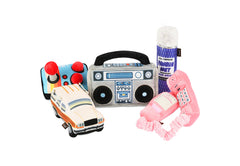Kids begging for a puppy or kitten is a tale as old as time. But how do parents know when their child is ready for a pet? While pet ownership has benefits like teaching responsibility and compassion, it’s also a big responsibility. All pets need daily care and, depending on the pet you choose, your new pet may live for 10 to 20 years.
The 4 best pets for kids
Your child may have his sights set on a particular pet, but first, consider how much responsibility and commitment your child can handle. While every child is different, these four pets are typically the best for kids:
Rats, hamsters, and guinea pigs
Small pets can be a great choice for kids who want a pet but aren’t ready for a long-term commitment. However, don’t assume small pets are interchangeable. While hamsters, rats, and guinea pigs are sociable, gerbils and chinchillas don’t like to be handled. Rabbits are surprisingly high-maintenance and not an ideal pet for kids.
Fish
While they’re not cuddly, freshwater fish are a fun first pet for kids. While children can help feed and care for pets as early as preschool, parents should expect to take responsibility for tank cleaning and maintenance until their child is teenaged.
Cats
Cats aren’t totally hands-off. However, their low-maintenance nature compared to dogs makes cats a popular choice for kids. Since cats aren’t tolerant of rough handling, parents should wait until their child is old enough to respect a cat’s boundaries before adopting.
Dogs
Dogs are the classic family pet for a reason. Loyal, gentle, and always up for fun, the right dog can be a wonderful addition to the home. However, kids can’t handle the responsibility of a dog on their own. If adopting a dog for your child, make sure the whole family is on board.
Preparing for your new pet
Asking your child to take the lead on preparing for your new pet accomplishes two things: It gets your household ready for pet ownership and shows whether your child is truly committed.
In addition to researching breeds and care needs, ask your child to make a shopping list for pet supplies. While parents may take the lead on crates and pet food, kids can choose items to keep their pet happy and entertained. For small pets, that may be running wheels and cardboard tunnels for enrichment, while dogs get toys and treat puzzles. Cats enjoy playing with toys too, but what your pet cat will really love is a cat tree where they can perch and scratch. If adopting a large-breed cat like a Maine coon, look for a sturdy cat tree that won’t tip over.
If you’re getting a new pet shortly before you decide to find a new house, then you’ll need to take your new companion in mind during that process as well. Not only will you need to ensure that the inside of the home is okay for your pet, but you’ll also need to take a look at the yard — especially if you intend to let your new friend spend some quality time outside.
Paying for your new pet
Pets don’t only require love and attention. They also require money. Decide how you’ll split the responsibility of paying for your pet’s needs. Older kids may babysit or do chores for extra money in order to pitch in for pet care; however, parents should be prepared to pay for training and veterinary care.
A child’s pet is a family pet
Only parents can decide if their child is ready for the responsibilities of pet ownership. However, even if your child is committed and enthusiastic today, be prepared for the possibility that your child grows tired of caring for their pet. A pet is a lifetime commitment, and if a child isn’t up to the task, it’s up to parents to step in and ensure their new pet is treated like part of the family.






